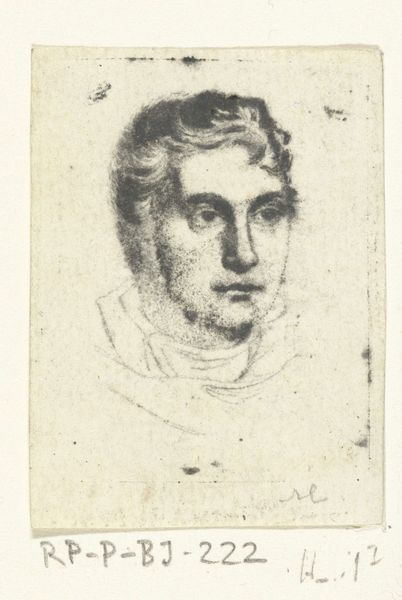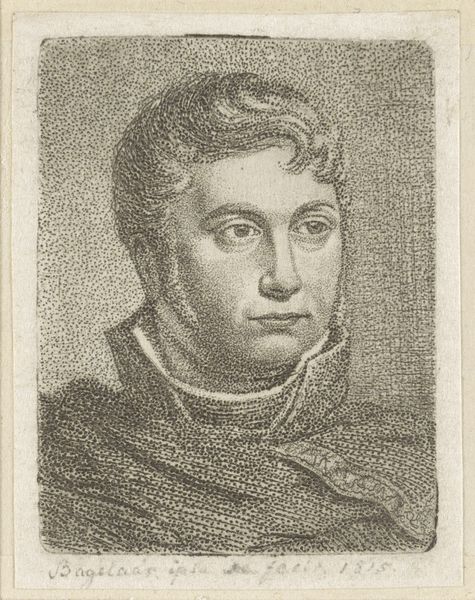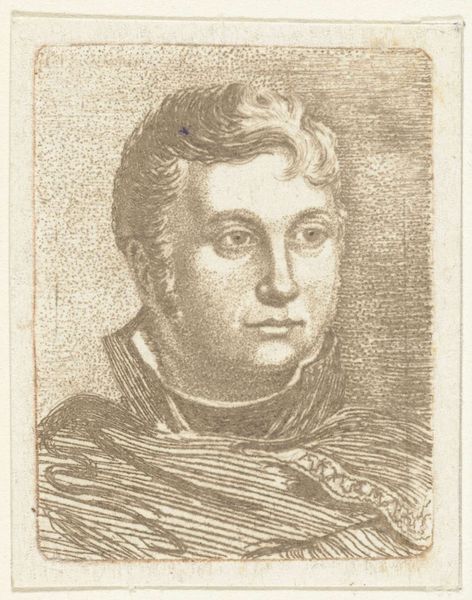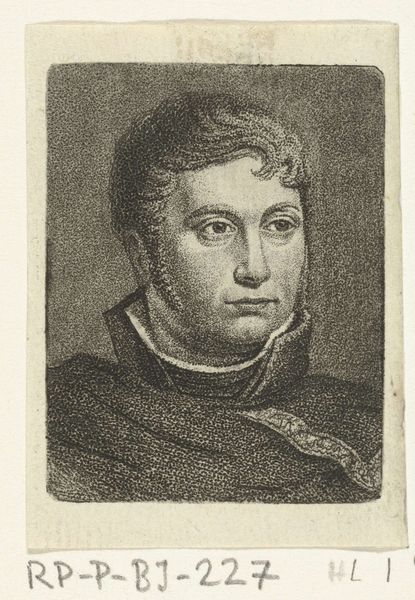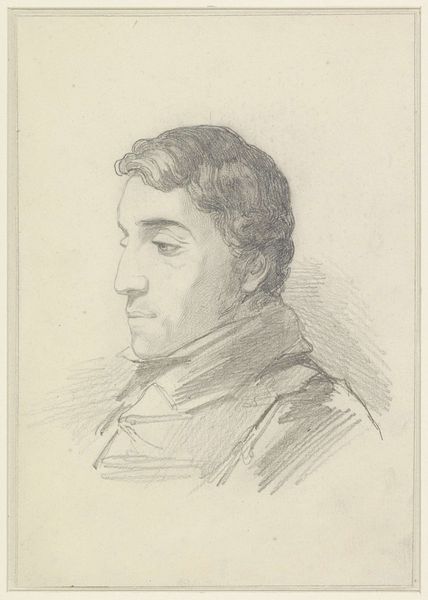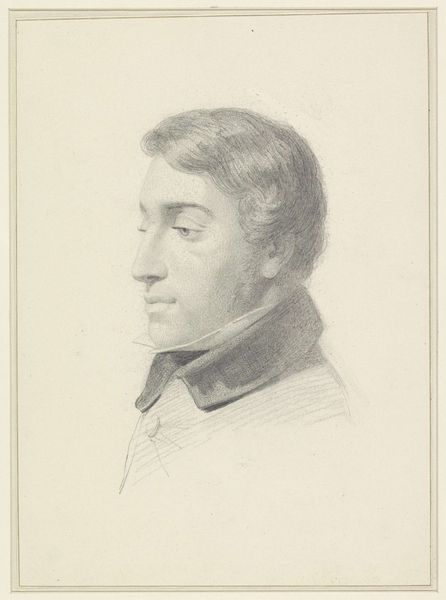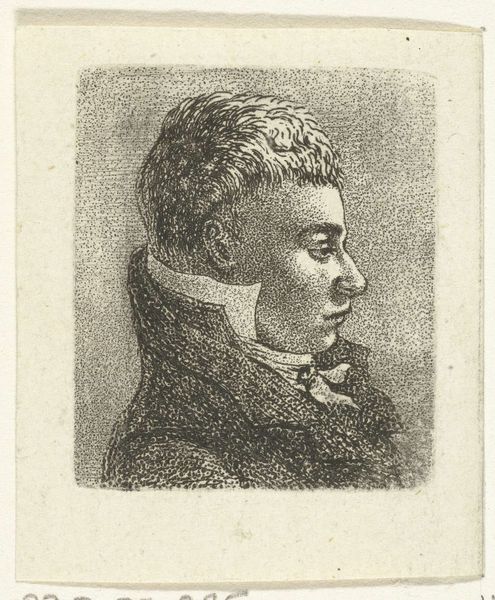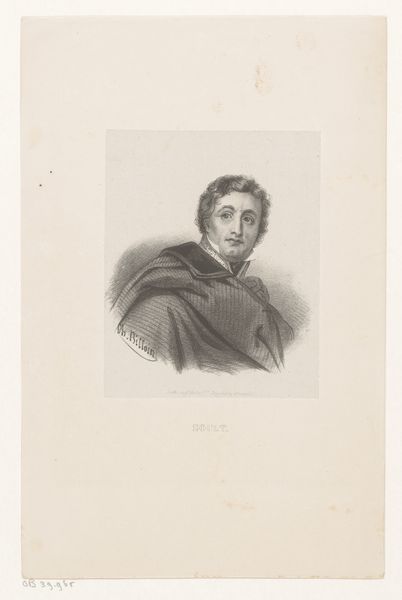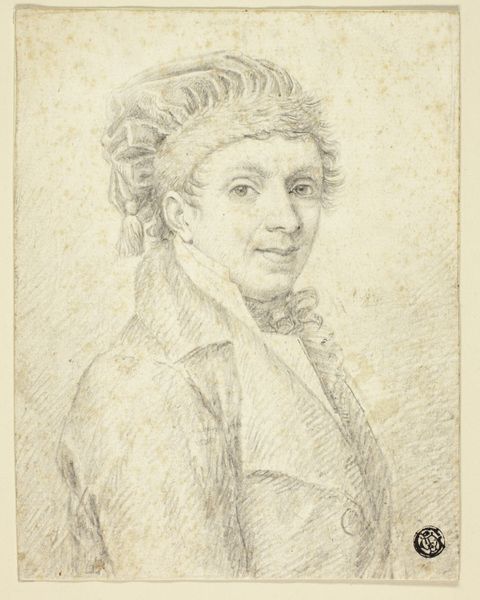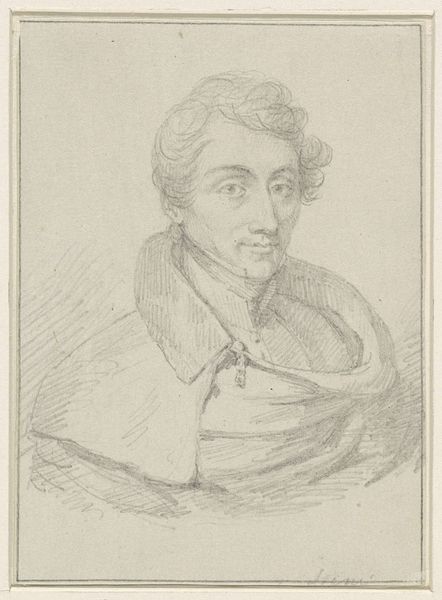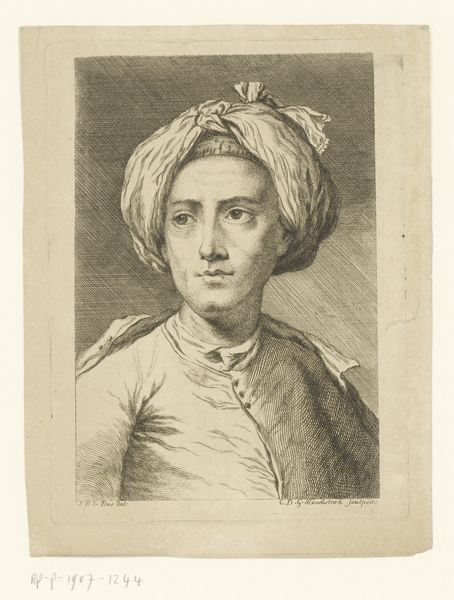
drawing, print, etching, engraving
#
portrait
#
drawing
# print
#
etching
#
pencil drawing
#
portrait drawing
#
engraving
#
realism
Dimensions: height 51 mm, width 40 mm
Copyright: Rijks Museum: Open Domain
This is a portrait bust made by Ernst Willem Jan Bagelaar, likely in the Netherlands during the early 19th century. We see Bagelaar has created a likeness of himself, using the etching technique, a popular medium for creating reproducible images at the time. The self-portrait gives us an insight into the world of early 19th century Dutch art. As a social historian, I'm particularly interested in the visual codes, and how they create meaning. The subject’s clothing, and hair, for example, indicate that Bagelaar was a man of some status. This was a period of great social and political upheaval in Europe, and the Dutch art world was going through its own changes. The old guilds were breaking down, and new institutions like art academies and museums were emerging. Understanding art requires that we look into the social and institutional contexts in which it was made. Primary sources such as letters, exhibition catalogues, and critical reviews can help us to understand the artist's intentions, and the reception of their work. Art is never created in a vacuum.
Comments
No comments
Be the first to comment and join the conversation on the ultimate creative platform.
